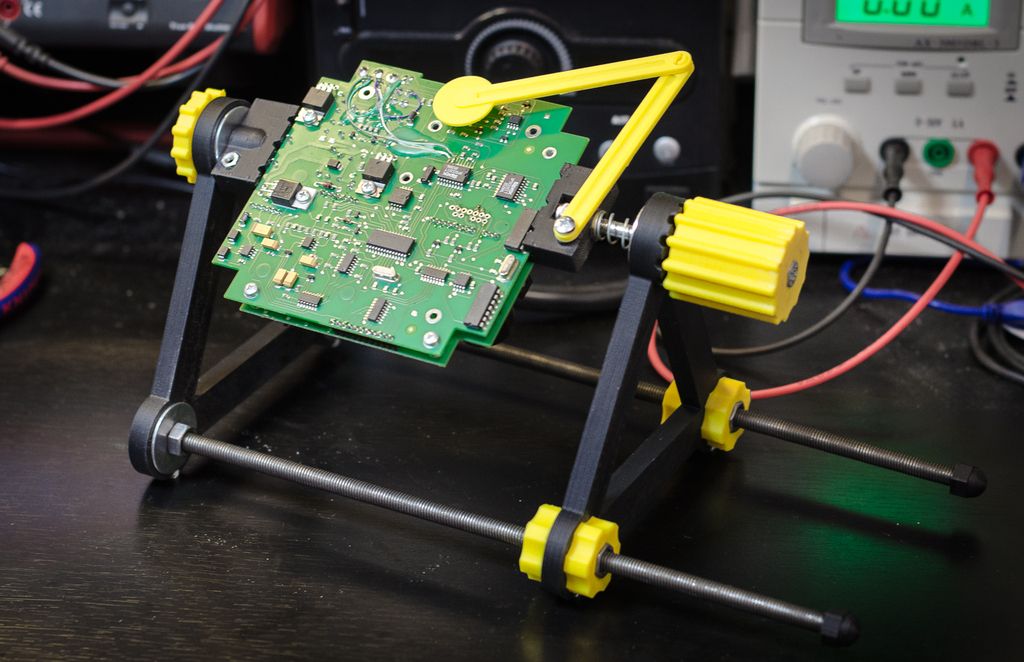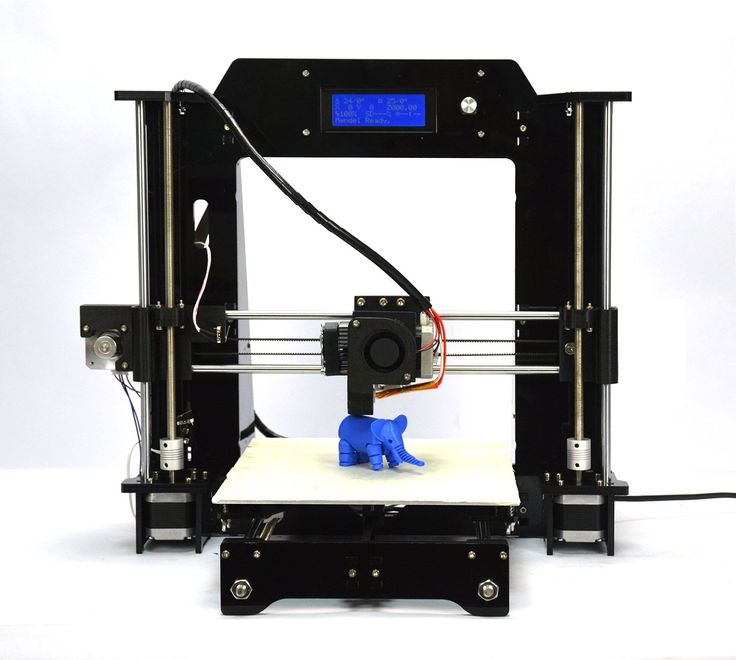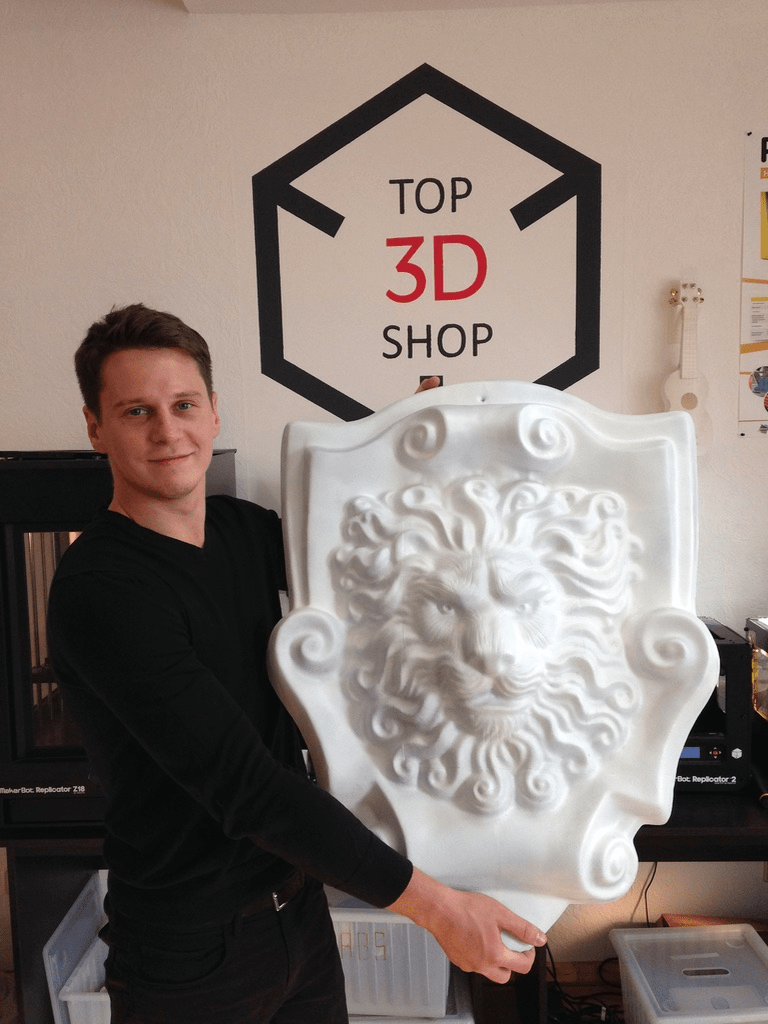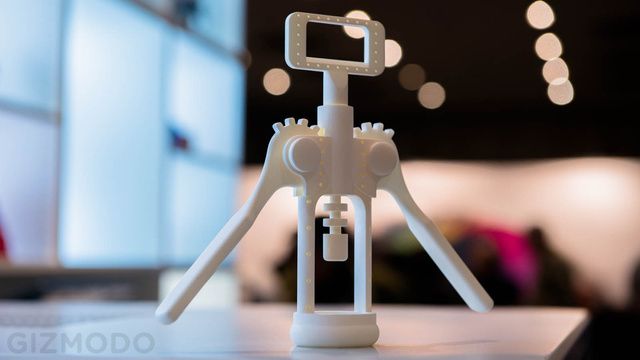3D printed gun bill
New US Federal Rule Treats 3D Printed Guns Like Any Other Firearm - 3DPrint.com
In April 2022, President Biden expressed his determination to crack down on ghost guns, promising that “if you commit a crime with a ghost gun, expect federal prosecution.” Now, a new federal “Frame or Receiver” rule goes into effect to ban ghost guns took effect on August 24, 2022.
Under the new policy put in place by the U.S. Bureau of Alcohol, Tobacco, Firearms and Explosives (ATF), all firearms made by federally licensed firearms dealers and gunsmiths, including 3D printed guns, must be serialized to help reduce the number of unmarked and hard-to-trace ghost guns. In addition, the new rule reclassifies gun frames and receivers as firearms under the law. It requires federally licensed firearms dealers and gunsmiths to have serial numbers added to any unserialized guns and to run background checks before selling kits that contain parts needed to assemble homemade firearms.
According to the official document, the Department of Justice highlighted Congress’s concern about untraceable firearms based on intelligence reports from Homeland Security, the Federal Bureau of Investigation, and the National Counterterrorism Center, which state that untraceable firearms pose a challenge to law enforcement’s ability to investigate crimes and that “wide availability of ghost guns and the emergence of functional 3D printed guns are a homeland security threat. ”
It also remarks that numerous criminal investigations and studies have demonstrated these concerns, while several states and municipalities have banned or severely restricted unserialized or 3D printed firearms. For example, in 2013, Philadelphia became the first U.S. city to ban making or owning 3D printed guns. In addition, gun 3D printing has been illegal in Massachusetts since 2018. Finally, this year, Maryland banned ghost guns and expressly prohibited making a ghost gun with a 3D printer when a minor is present.
Furthermore, the new rule explains that as technology progresses, privately made guns “are likely to make their way to the licensed community because firearms licensees are likely to market them for sale, accept them into a pawn, or repair them through gunsmithing services.”
Days before the new policy was in place, Homeland Security Today reported that extremists were urging followers to learn 3D printing to “clandestinely produce weapons that are useful to us” and “disregard the law. ” CBS News also noted that many websites that sell ghost gun parts posted countdowns to the date the rule takes effect and have published “information for enthusiasts who want to continue building firearms at home.”
” CBS News also noted that many websites that sell ghost gun parts posted countdowns to the date the rule takes effect and have published “information for enthusiasts who want to continue building firearms at home.”
3D Printed Gun Use and Crime
Serial number or not, many argue that law enforcement should be worried about persons misusing guns instead of curtailing homemade weapons, which have been entirely legal for centuries. The argument is that anyone who chooses to use a gun to commit a crime will do so, no matter what the new rule states.
According to our research 3D printed gun arrests tripled in less than two years. Simultaneously, an investigation into 3D printed firearms during the International Conference on 3D Printed Firearms held at the Hague last May revealed that Dutch police have seen a significant increase in 3D printed weapons in the Netherlands and abroad. However, even though they see an upsurge in 3D printed gun confiscations, their study results still show that the supply of ready-to-use 3D printed firearms is currently small compared to the supply of conventional guns.
Historically, 3D printed weapons have played a limited role in actual criminal violence. Still, potential criminals and extremist groups have shown plenty of interest in them, and violent gang members have been arrested after attempting to print guns and parts or sell them. In fact, the increasing response to homemade 3D printed firearms by law enforcement and governments is a sign that they portray the threat as real and that violence with these weapons could escalate. After all, 3D printed guns are becoming more sophisticated and can now fire dozens of rounds without yielding under the pressure of a shot, as some of the first versions did.
Regardless, making a fully functional, 3D printed gun is not entirely straightforward and something many people will not attempt to do at home. 3D printing a weapon requires the user to have a 3D printer at home, and experts estimate that only one or two million homes own 3D printers. Moreover, only a minority of owners would use it for 3D printing guns, so the number of people creating these weapons is extremely low at the moment.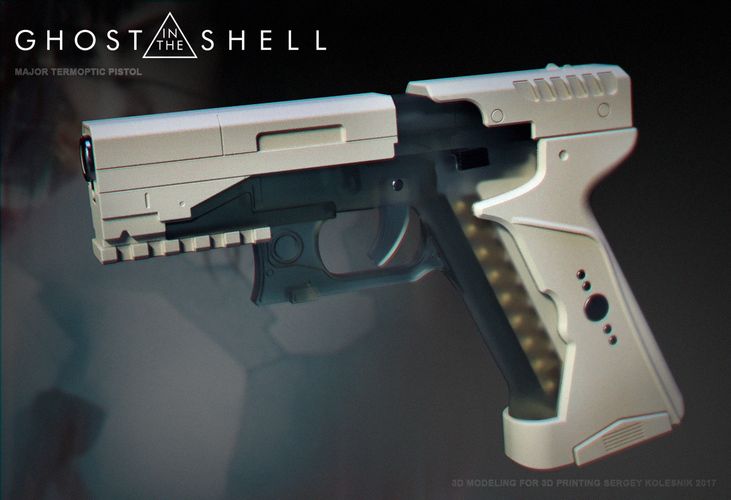
3D models for weapons, however, are a different story as hundreds of thousands, if not millions, of people have already downloaded tutorials for 3D printed guns already. Files for 3D printing a gun aren’t hidden on the dark web but can be downloaded from file-sharing websites. For example, in 2013, it took only two days for more than 100,000 users to download the files for the Liberator, the first 3D-printable single-shot handgun design. Although this could alarm many people, former ATF Special Agent David Chipman said during a Twitter Q&A with concerned citizens that, although several files had already been downloaded, he is more concerned about future files for 3D printable firearms that will be more lethal and intricate.
The Liberator 3D printed gun. Image courtesy of justinpickard on Flickr.The Perceived Threat of 3D Printed Guns
Aside from the Liberator, other highly publicized 3D printed guns have been used. Also, online communities often share videos of 3D printed guns and gun parts that operate much like the real thing.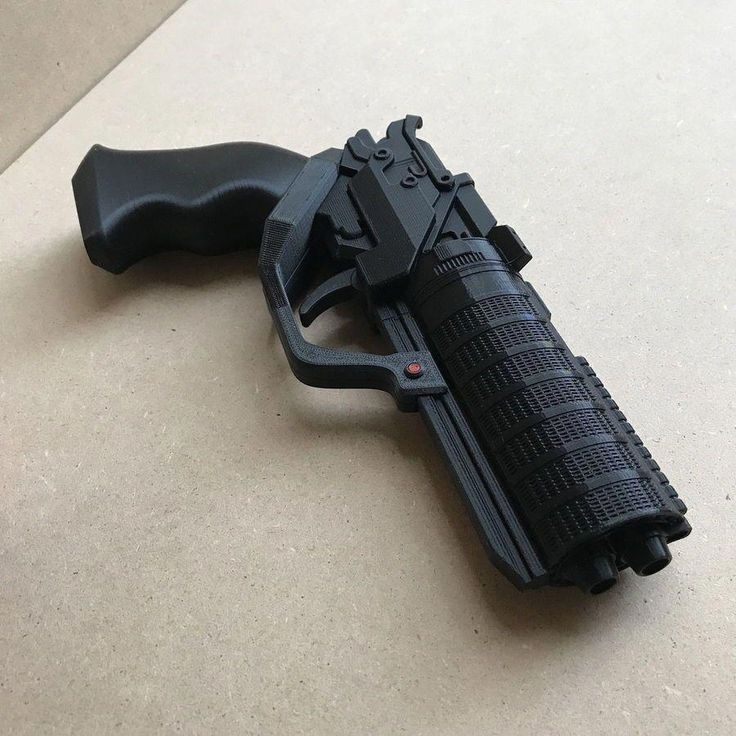
For example, back in 2013, Solid Concepts, a custom manufacturing company in California now owned by Stratasys, built the first entirely 3D printed replica of a .45 caliber M1911 semi-automatic that served as the U.S. military’s standard-issue sidearm for more than 70 years. Capable of striking a target bull’s-eye over 50 times, the metal gun was built using industrial-grade metal powder bed fusion 3D printers. This, however, is a whole new level of printer. So expensive (in the mid-hundred thousand range) that most individuals cannot afford one.
Instead, 3D printed guns are usually made of plastic with smaller 3D printers. This poses an entirely different risk to governments, basically that their undetectable nature. Not all metal detectors can pick up on plastic, but Transportation Security Administration (TSA) screeners proved theirs could when in 2018, they spotted a plastic 3D gun in a carry-on bag. Since August 2016, the TSA has detected a few 3D printed guns and gun components.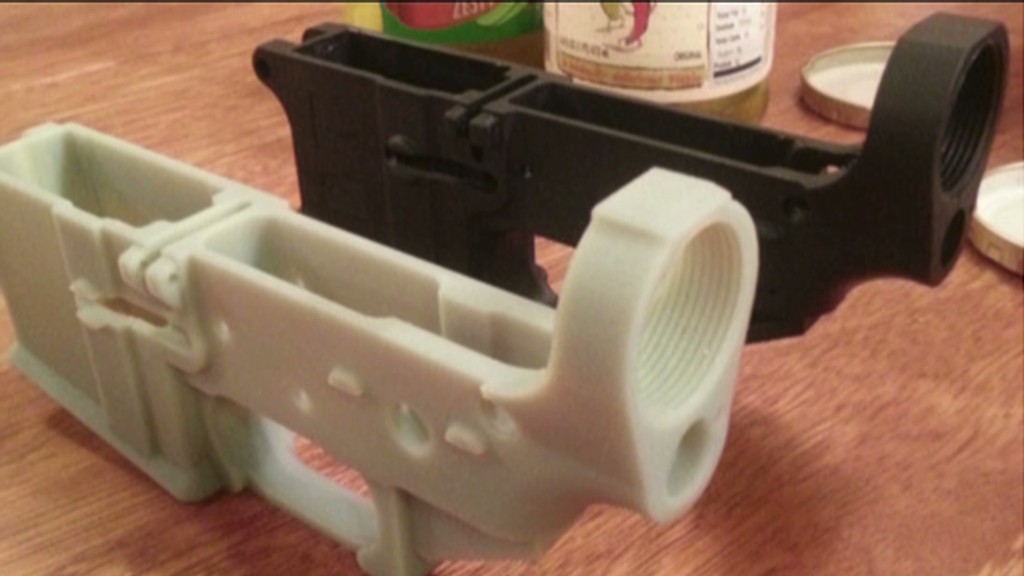
To fill this gap and make sure all 3D weapons don’t slip through security checks, security technology newcomer Liberty Defense is ready to beta test a new non-metal weapons detection system in airports and other commercial checkpoints that could make 3D printed weapons equally discernible as any other gun.
Even with the new ghost gun rule in place, people will not stop building their firearms at home. Instead, they will have to follow the existing new federal rule that says manufacturers of 3D printed guns will have to include serial numbers.
Subscribe to Our Email Newsletter
Stay up-to-date on all the latest news from the 3D printing industry and receive information and offers from third party vendors.
Tagged with: 3d guns • 3d printed firearm • 3d printed gun • 3D printed gun arrests • 3D printed gun blueprint • 3d printed gun control • 3D printed gun laws • 3d printed gun legislation • firearms • Liberator 3d printed firearm
Please enable JavaScript to view the comments powered by Disqus.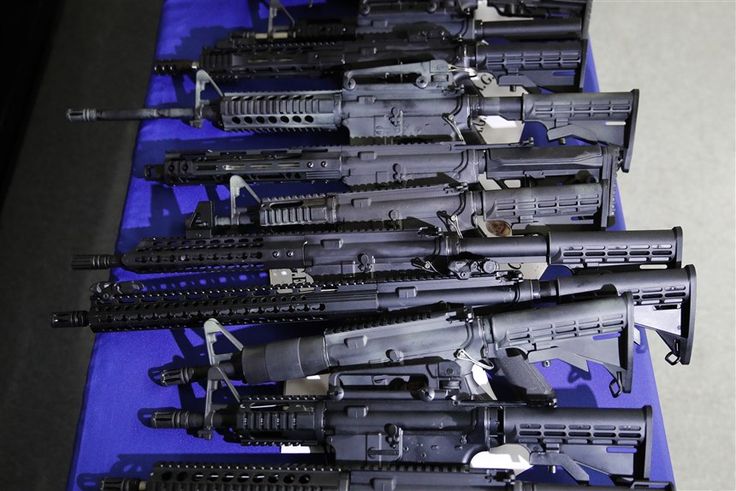
Senators Markey and Menendez, and Rep. Deutch Reintroduce Ban on 3D Printed Guns
Washington (June 29, 2021) – Senators Edward J. Markey (D-Mass.) and Robert Menendez (D-N.J.), and Congressman Ted Deutch (FL-22) today reintroduced the 3D Printed Gun Safety Act, legislation to prohibit the online distribution of blueprints and instructions that allow for the three dimensional (3D) printing of firearms.
Because
3D printing allows individuals to make firearms out of plastic, these guns may
be able to evade detection by metal detectors at security checkpoints,
increasing the risk that a firearm will be used to perpetrate violence on an
airplane or in another area where people congregate. The increasing
availability of 3D printers means unlicensed individuals, including violent
felons, domestic abusers, and other dangerous individuals, could obtain a
firearm by manufacturing it themselves. These firearms are also untraceable
since they do not have a serial number for law enforcement to reference.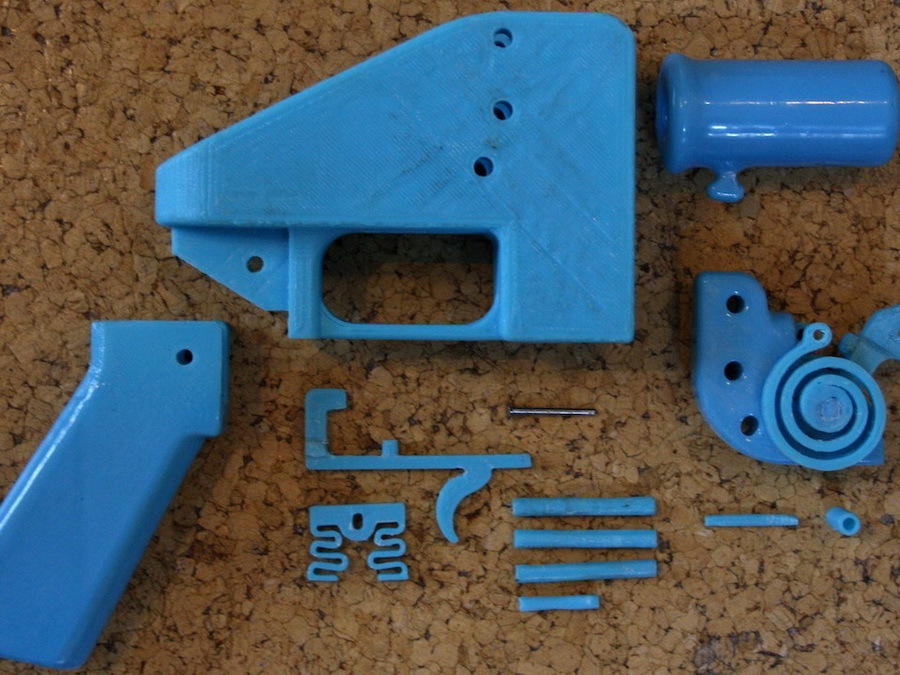 If the
instructions for 3D printing firearms and firearm parts are available online,
people intending to commit gun crimes may create untraceable firearms in order
to avoid accountability for these crimes. The 3D Printed Gun Safety Act
will make it illegal to distribute online digital files that can automatically
program a 3D printer to produce or complete the manufacture of a firearm.
If the
instructions for 3D printing firearms and firearm parts are available online,
people intending to commit gun crimes may create untraceable firearms in order
to avoid accountability for these crimes. The 3D Printed Gun Safety Act
will make it illegal to distribute online digital files that can automatically
program a 3D printer to produce or complete the manufacture of a firearm.
“With
no background check required, untraceable and undetectable 3D printed guns
serve as the ultimate gun-acquisition loophole,” said Senator Markey. “With
the click of a mouse, anyone can download a computer file and use a 3D printer
to manufacture a semi-automatic weapon. We cannot allow the online availability
of downloadable firearms to add fuel to the fire that already is a massive gun
violence public safety crisis. I thank Senator Menendez and Congressman Deutch
for their tremendous partnership on this legislation that will help close a
major safety loophole. ”
”
“With the click of a mouse, anyone with an internet connection and a 3D printer essentially has a license to print, shoot and kill,” said Senator Menendez. “Undetectable and untraceable 3D printed guns allow criminals to circumvent law enforcement and commit crimes. That’s why we must close the ‘3D Gun Loophole’ that allows dangerous individuals to exploit gaps in existing law to manufacture firearms at home they cannot otherwise legally obtain.”
“3D
printers are increasingly used to manufacture everyday goods easily and
cheaply; but, we cannot allow individuals to make deadly firearms with the same
ease," said Congressman Deutch. "These printers are capable of
making high-strength plastic firearms that are untraceable and undetectable –
something criminals and other individuals prohibited by law from possessing a
firearm could use to evade our laws. Congress must take care to ensure that
internet access does not equal gun access.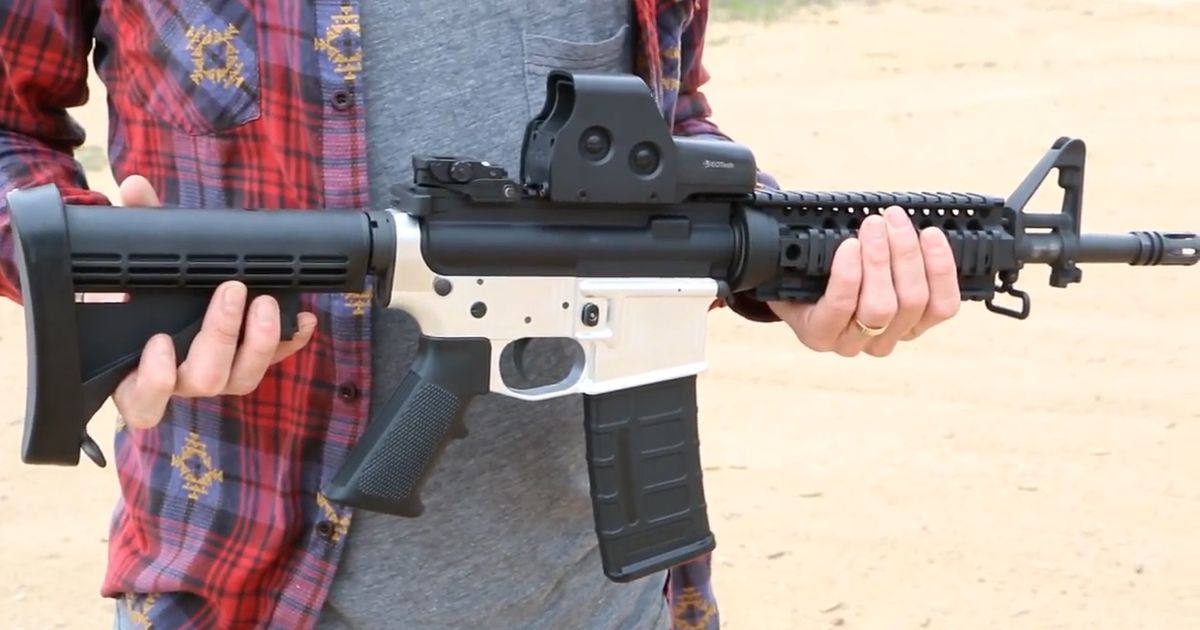 ”
”
A copy of the legislation can be found HERE.
Other members of the Senate co-sponsoring the legislation include Senators Jack Reed (D-R.I.), Brian Schatz (D-Hawaii), Bob Casey (D-Penn.), Diane Feinstein (D-Calif.), Ron Wyden (D-Ore.), Richard Blumenthal (D-Conn.), Jeff Merkley (D-Ore.), Sheldon Whitehouse (D-R.I.), Tammy Duckworth (D-Ill.), Dick Durbin (D-Ill.), Bernie Sanders (I-Vt.), Alex Padilla (D-Calif.), Christopher Murphy (D-Conn.), Chris Van Hollen (D-Md.), Tina Smith (D-Minn.), Patrick J. Leahy (D-Vt.), Tim Kaine (D-Va.), Ben Cardin (D-Md.), Amy Klobuchar (D-Minn.), Tammy Baldwin (D-Wis.), Cory Booker (D-N.J.), Christopher A. Coons (D-Del), Sherrod Brown (D-Ohio), and Maize K. Hirono (D-Hawaii), Kirsten Gillibrand (D-N.Y.), and Patty Murray (D-Wash.).
Other
members of the House of Representatives co-sponsoring the legislation include
Representatives Bradley Schneider (IL-10), Debbie Wasserman Schultz (FL-23),
Carolyn B Maloney (NY-12), Lisa Blunt Rochester (DE), Don Beyer (VA-08), Tony
Cárdenas (CA-29), Sean Casten (IL-06), Kathy Castor (FL-14), Judy Chu (CA-27),
Katherine M. Clark (MA-05), Yvette Clarke (NY-09), Gerald E. Connolly (VA-11),
Charlie Crist (FL-13), Danny K. Davis (IL-07), Susan A. Davis (CA-53),
Madeleine Dean [PA-04], Suzan DelBene (WA-01), Val B. Demings (FL-10), Mark
DeSaulnier (CA-11), Adriano Espaillat (NY-13), Dwight Evans (PA-03), Jared
Huffman (CA-02), Pramila Jayapal (WA-07), Henry C. "Hank"
Johnson, Jr. (GA-04), William R. Keating (MA-09), Robin L. Kelly (IL-02),
Ro Khanna (CA-17), Barbara Lee, (CA-13), Alan Lowenthal (CA-47), Sean Patrick
Maloney (NY-18), Grace Meng (NY-06), Eleanor Holmes Norton (DC), Donald Payne
(NJ-10), Scott H. Peters (CA-52), Mike Quigley (IL-05), Jaime Raskin (MD-08),
Raúl Grijalva (AZ-03), Kathleen M. Rice (NY-04), C. A. Dutch Ruppersberger
(MD-02), Janice D. Schakowsky (IL-09), Darren Soto (FL-09), Abigail Spanberger
(VA-07), Thomas R. Suozzi (NY-03), Dina Titus (NV-01), and Bonnie Watson
Coleman (NJ-12).
Clark (MA-05), Yvette Clarke (NY-09), Gerald E. Connolly (VA-11),
Charlie Crist (FL-13), Danny K. Davis (IL-07), Susan A. Davis (CA-53),
Madeleine Dean [PA-04], Suzan DelBene (WA-01), Val B. Demings (FL-10), Mark
DeSaulnier (CA-11), Adriano Espaillat (NY-13), Dwight Evans (PA-03), Jared
Huffman (CA-02), Pramila Jayapal (WA-07), Henry C. "Hank"
Johnson, Jr. (GA-04), William R. Keating (MA-09), Robin L. Kelly (IL-02),
Ro Khanna (CA-17), Barbara Lee, (CA-13), Alan Lowenthal (CA-47), Sean Patrick
Maloney (NY-18), Grace Meng (NY-06), Eleanor Holmes Norton (DC), Donald Payne
(NJ-10), Scott H. Peters (CA-52), Mike Quigley (IL-05), Jaime Raskin (MD-08),
Raúl Grijalva (AZ-03), Kathleen M. Rice (NY-04), C. A. Dutch Ruppersberger
(MD-02), Janice D. Schakowsky (IL-09), Darren Soto (FL-09), Abigail Spanberger
(VA-07), Thomas R. Suozzi (NY-03), Dina Titus (NV-01), and Bonnie Watson
Coleman (NJ-12).
Weapon 3D printing, 3D printer for printing weapons
Turch December 13th, 2014
3D printing and 3D prototyping are synonyms for the production of physical objects according to a three-dimensional layout made in any graphic editor. This allows you to create structures of any complexity and work out internal details that are impossible to perform on modern equipment.
This allows you to create structures of any complexity and work out internal details that are impossible to perform on modern equipment.
Types of 3D prototyping technologies:
- Extrusion is a method in which the material is first melted and then extruded in the desired proportions, determined by a given program.
- Granulation is a method in which material particles are glued together or sintered under the influence of high temperature.
- Laminating - applying thin layers of material on top of each other and then cutting out (as on a lathe).
- Photopolymerization - the process of polymer curing when exposed to a laser beam.
Regardless of the application of any of the existing technologies, the basic principle remains the same. Application of material ball by ball in three planes (X, Y, Z axis). 3D printing can be used in any field, as it allows you to create an object from scratch. It is enough to load its virtual layout.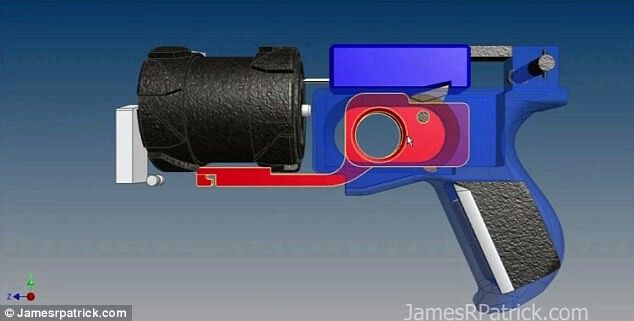
3D printing materials weapons
Since 3D printing technology has a very wide scope, the materials are also quite diverse:
- Polylactide
- Petroleum products (plastic, nylon).
- Metal powder.
- Mixture of plastic and wood (wood fibre).
- Polycaprolaton.
- Polypropylene.
- Acrylic.
- Gypsum and others.
Polylactid
Plastic
Nylon
Metal powder (product)
9000
Wood fiber
Polycaprolaton
Polypropylene
In fact, even food products can be used in 3D printing. For example, chocolate. From it you can create edible figurines or a mini-sculpture of a person.
Equipment for 3D printing of weapons
A machine that converts a virtual model, by the method of ball-and-stick application of material, into a real object is called a 3D printer.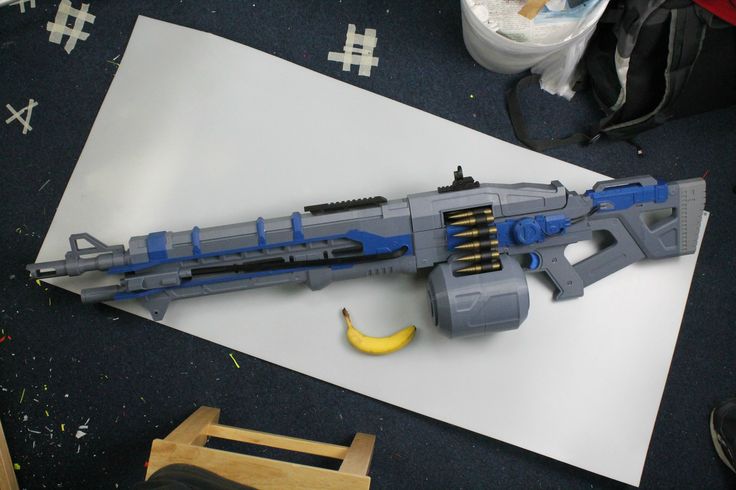 It can be used at home (desktop) and commercially (industrial). The cost varies from 1,000 to 1,000,000 US dollars. Also, for each technology, a separate model of the device is provided.
It can be used at home (desktop) and commercially (industrial). The cost varies from 1,000 to 1,000,000 US dollars. Also, for each technology, a separate model of the device is provided.
Weapons on a 3D printer
The idea to print military weapons on a 3D printer first appeared in the United States of America.
In May of this year, a video appeared on the Internet in which a man shoots from a printed model of a Liberator pistol. It was 25-year-old Cody Wilson, head of Defense Distributed, which promotes the idea of universal availability of 3D weapons.
Using a 3D printer, they printed firearms and uploaded the files of their work to the World Wide Web. Defense Distributed employees have already made magazines that hold more cartridges for the AR-15s rifle and the legendary Kalashnikov assault rifle (AK-47 modification). Also on their account is the manufacture of the lower part of the receiver, in which the bolt of a self-loading rifle AR - 15 is placed. You can attach the barrel and magazine to it, having received a finished weapon without any problems. No authorization is required to purchase parts in the USA. Now work is underway on a 3D printout of the entire rifle. In doing so, Cody and his team dealt a major blow to the American gun control debate. The discussion began in December, after twenty children and six adults were killed by assassins at a junior high school in Connecticut. The vast majority of Americans rallied to support government reform. This is a thorough check that will make it difficult for criminals to obtain weapons. However, this did not prevent Mr. Wilson from obtaining a federal license to manufacture and sell firearms.
You can attach the barrel and magazine to it, having received a finished weapon without any problems. No authorization is required to purchase parts in the USA. Now work is underway on a 3D printout of the entire rifle. In doing so, Cody and his team dealt a major blow to the American gun control debate. The discussion began in December, after twenty children and six adults were killed by assassins at a junior high school in Connecticut. The vast majority of Americans rallied to support government reform. This is a thorough check that will make it difficult for criminals to obtain weapons. However, this did not prevent Mr. Wilson from obtaining a federal license to manufacture and sell firearms.
More serious developments in the field of printing firearms on a 3D printer are being carried out in Austin, Texas. The project is led by Eric Macler, coordinator at Solid Concepts, a 3D printing company.
Erik Machler
Ten industrial 3D printers are installed at the Austin plant. Solid Concepts received a federal license to manufacture weapons, and now, using direct metal laser sintering technology, produces the Browning 19 pistol.eleven". Making a pistol takes up to 35 hours. Depending on which printer and materials are used. More than 1,000 shots have already been fired from the first printed pistol, Solid Concepts, while the company has created a second version of the Browning 1911 model.
Solid Concepts received a federal license to manufacture weapons, and now, using direct metal laser sintering technology, produces the Browning 19 pistol.eleven". Making a pistol takes up to 35 hours. Depending on which printer and materials are used. More than 1,000 shots have already been fired from the first printed pistol, Solid Concepts, while the company has created a second version of the Browning 1911 model.
Solid Concepts is not going to mass-produce the gun because they can't sell it in a way that makes a profit. While many 3D printers cost around $1,000, Solid Concepts says hobbyists can't make the stainless steel gun they make. Since their machines cost between $600,000 and $1 million, industrial conditions are needed here. The devices consume more electricity than can be obtained in residential areas. In addition, the printers use inert gases that are not commercially available.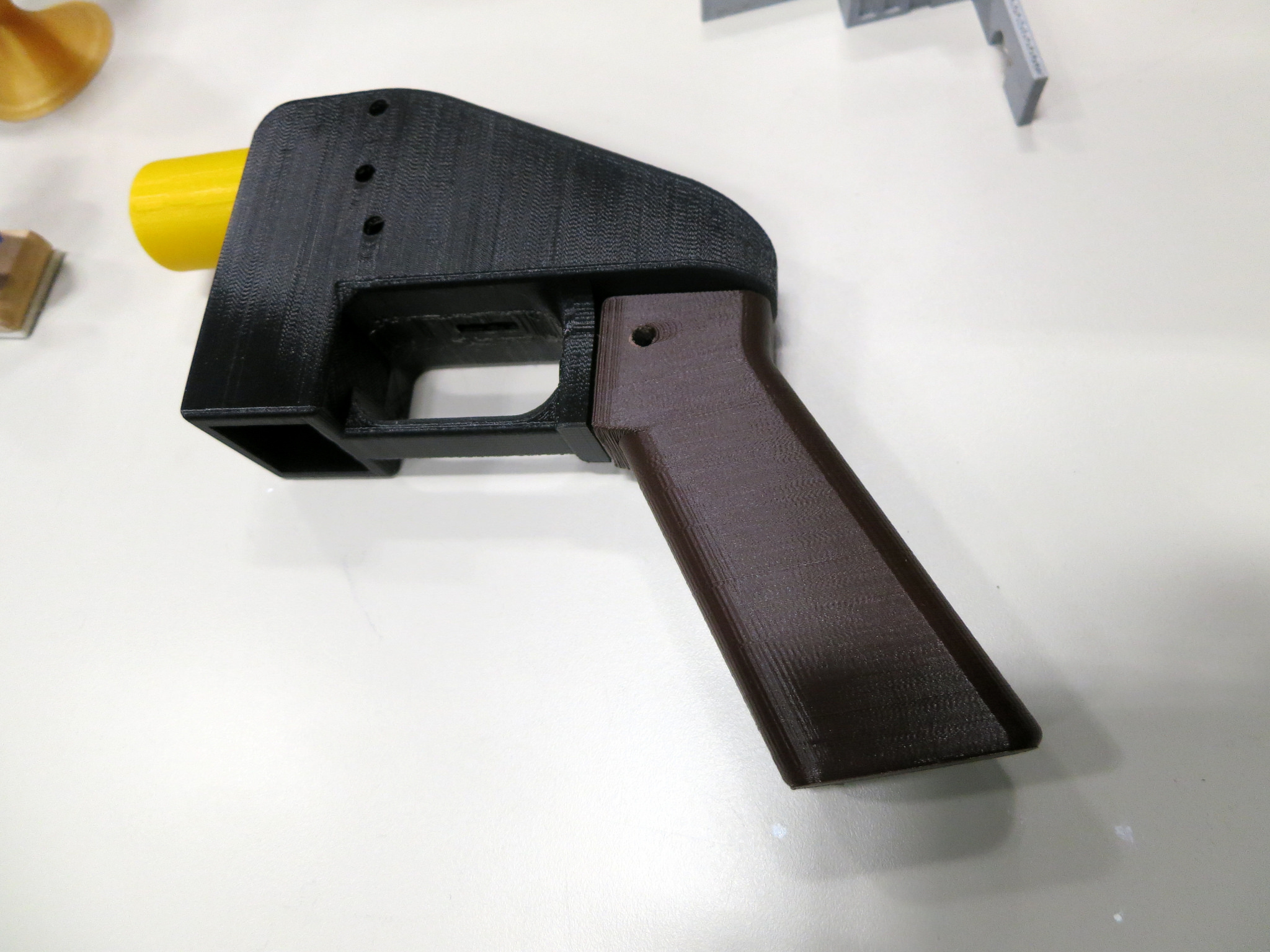 So this is a technology for commercial production.
So this is a technology for commercial production.
The first cases of arrests for making weapons on a 3D printer have already appeared. So, a Japanese citizen Yoshimo Imuro was detained by local law enforcement agencies for carrying military weapons, which he printed on a 3D printer. During a search of his home, 5 weapons were found, two of which were combat. The court sentenced Imuro to two years' imprisonment. The detainee said that he himself developed the technology for creating a pistol, and downloaded the drawings on the Internet. The man also said that he purchased a 3D printer from an online store for 60,000 Japanese yen. This corresponds to 600 US dollars. Also, according to experts, weapons made in this way can be dangerous not only for those against whom it is used, but also for the shooter himself.
Deadly number: what the inventor of the world's first 3D gun is fighting for
Radical libertarian Cody Wilson 3D printed a full-fledged model of a pistol and was the first to test an innovative weapon. What threatens the world with his invention?
What threatens the world with his invention?
Order. One…two…” On the count of “three”, a gunshot shakes the peaceful Texas landscape. Tall, blond-haired engineer John has just pulled the end of a 6-meter yellow rope that has pulled the trigger for the world's first 3D printed gun. Bullet from 9 caliber ammunitionx17 mm flies into thickets of low dense bushes.
"First off!" shouts John, who asked me not to publish his full name. He hurries to check the weapon, mounted on an aluminum frame. But the tester is ahead of Cody Wilson, a tall, bristly man in a polo shirt and a baseball cap. John just pulled the trigger, while 25-year-old Wilson is the father and mastermind behind the breakthrough project. He spent more than a year perfecting his brainchild, which he named the Liberator after the cheap single-shot pistols of the Second World War.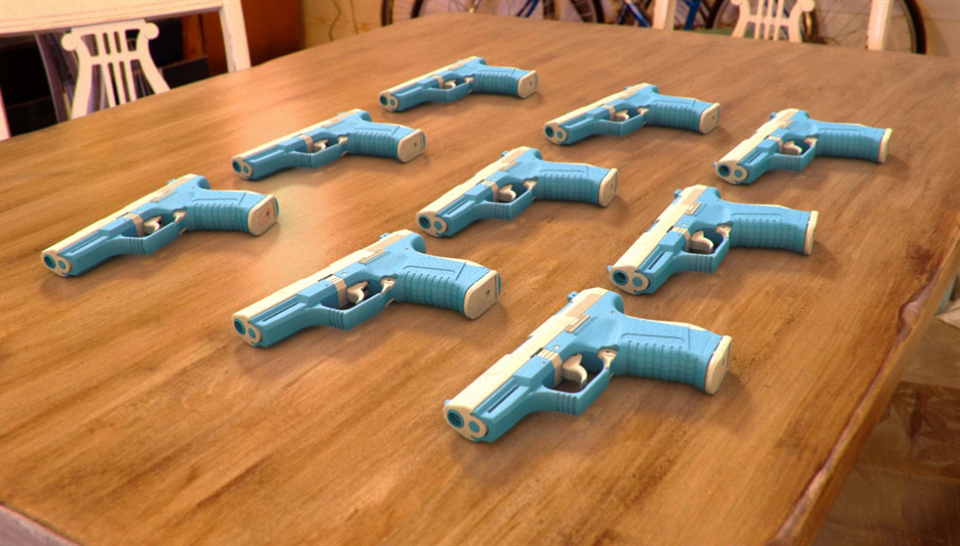 The "ancestor" of the innovative weapon was developed by the Allies specifically for dropping large batches from the air in the territory of occupied France.
The "ancestor" of the innovative weapon was developed by the Allies specifically for dropping large batches from the air in the territory of occupied France.
In contrast to the steel "original", the Wilson pistol is almost entirely made of thermoplastic: 15 of the 16 parts of the weapon are made from this material. They are all printed on a used $8,000 Stratasys Dimension industrial 3D printer. The developer made an exception for the striker, which was used as an ordinary nail.
Wilson leans over the gun and carefully examines the barrel. It took four hours to print the largest part. After the shot, both the barrel and the body of the pistol appear intact. After a few more seconds of visual analysis, the inventor states: “I think we did it.” There is a hint of skepticism in his voice.
In August 2012, Wilson, a University of Texas student and radical libertarian anarchist, cobbled together a non-profit organization called Defense Distributed in Austin to develop a 3D weapon project that anyone could use. Digital drawings of the pistol, which the creator called the Wiki Weapon in the drafts, can be found on the net and downloaded by every Internet user. This not only calls into question the existing parameters of the regulation of the arms market, but also exacerbates the conflict between the state and supporters of a free society. “You can print a deadly device. Sounds scary, but that's our goal. Wherever there is a computer and the Internet, users will have access to weapons,” explains Wilson.
On May 1, 2013, he assembled the Liberator parts for the first time and agreed to have a Forbes photographer capture the components on camera. A day later, the pistol passed its first marksmanship test at a private property about an hour from Austin. I was also asked not to disclose the exact coordinates of the improvised training ground.
The verdict is this: this thing works. The pistol fired a standard 9x17 cartridge without any visible technical flaws. True, the first misfire also happened: the striker did not hit the primer and instead of a shot, only a dull thud was heard.
So far, weapon technology allows the use of only certain caliber cartridges. When Wilson tried to load a 5.7x28 mm caliber into the pistol, when the trigger was pressed, the Liberator simply blew up. So the debut tests of the invention ended “lethally”.
On the way home, Wilson did not look overly satisfied with the results of the tests, despite the relative success of the event. He preferred to focus on problems. The inventor himself set a deadline for himself by which he would have to bring to mind the drawings for the Internet. “I'm not quite happy yet,” he said. “We have a lot of work ahead of us.”
The most important Wiki Weapon test was days away. The "moment of truth" for the project in Wilson's understanding was to be a shot from the hand. After the prototype was torn to pieces before our eyes, this prospect looked really frightening.
When we published photos of the Liberator on Friday on the Forbes website, a real political battle unfolded around the project. Instead of debating the most promising 3D printing technology, the debaters focused on the terrorist potential of Wilson's invention. Congressman Steve Israel responded to the news from Defense Distributed with a legislative initiative to expand the Undetectable Firearm Act, which prohibits the circulation of firearms that cannot be detected by metal detectors. “Security departments, document checks and market regulation will do little to help us if criminals get the functionality to print plastic guns at home and smuggle them through frames,” the congressman said in a statement. Israel was supported by Senator Charles Schumer: "A terrorist, a mentally ill person or an adherent of radical ideas now has everything to equip a small arms factory in his garage. "
Israel and Schumer are not the first opponents of Wilson's project. Back in August, the Defense Distributed fundraising campaign was curtailed by the administration of the crowdsourcing portal Indiegogo due to the odious nature of the startup. In October, 3D printer maker Stratasys confiscated a model leased by Wilson's team after learning of the lease's purpose. Twice inventors were kicked out of workshops where they worked on weapon designs. As a result, they had to huddle in a closet with an area of 3.5 square meters. m in a workshop on the southern outskirts of Austin. And this is without taking into account the fact that most of the space was taken up by a 3D printer resembling a modern refrigerator in size.
However, each new obstacle only spurred Wilson's enthusiasm. He raised funds for the implementation of the project using the digital currency Bitcoin, in which 99% of the assets of Defense Distributed are accumulated today. In March, the group received a federal license to manufacture weapons. The framed document now hangs on the wall of the miniature workshop. The inventor circumvented the dilemma with the Stealth Weapons Act by implanting a 170-gram steel cube into the case of the Liberator. A non-functional part does not burden the owner of the gun too much, and at the same time allows the metal detector to fix it. Wilson installed the $400 frame right at the entrance to the workshop. “Our strategy is to fully comply with all the requirements of the law,” he says (however, no one can give guarantees that users of Wilson’s instructions will also be able to install a metal die in their “liberators”).
In March, the group received a federal license to manufacture weapons. The framed document now hangs on the wall of the miniature workshop. The inventor circumvented the dilemma with the Stealth Weapons Act by implanting a 170-gram steel cube into the case of the Liberator. A non-functional part does not burden the owner of the gun too much, and at the same time allows the metal detector to fix it. Wilson installed the $400 frame right at the entrance to the workshop. “Our strategy is to fully comply with all the requirements of the law,” he says (however, no one can give guarantees that users of Wilson’s instructions will also be able to install a metal die in their “liberators”).
The success of the first tests of the pistol will also silence the critics of the technical solution chosen by the inventor. Many skeptics have argued that plastic weapons will not withstand the pressure and temperature of cartridge case release and will deform or explode when fired.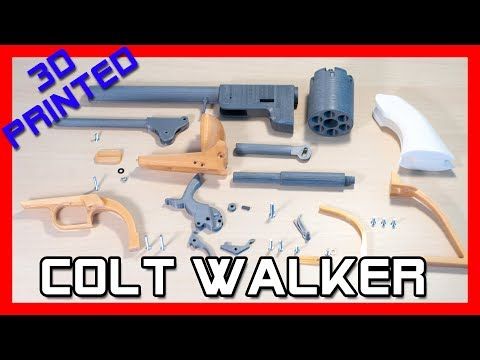 But Defense Distributed figured out how to solve a difficult problem. After testing at the test site, Wilson showed me a video in which a printed plastic barrel, mounted on a conventional body, fires ten rounds of 9 rounds in a row.x17 and only breaks on the eleventh lap.
But Defense Distributed figured out how to solve a difficult problem. After testing at the test site, Wilson showed me a video in which a printed plastic barrel, mounted on a conventional body, fires ten rounds of 9 rounds in a row.x17 and only breaks on the eleventh lap.
The inventor admits that he himself does not fully understand how such an effect became possible. An important role could be played by the decision to first lower the barrel into a vessel with acetone. The chemical treatment of the weapon makes the terrain smoother and avoids additional friction. The printer model used by Defense Distributed also allows printing at 75 degrees Celsius. Stratasys' patented thermal technology gives the Liberator greater mechanical strength.
The goal of Defense Distributed is to adapt the technology to more affordable printer models, like Makerbot's $2200 Replicator and the even cheaper RepRap, built by enthusiasts and using free software.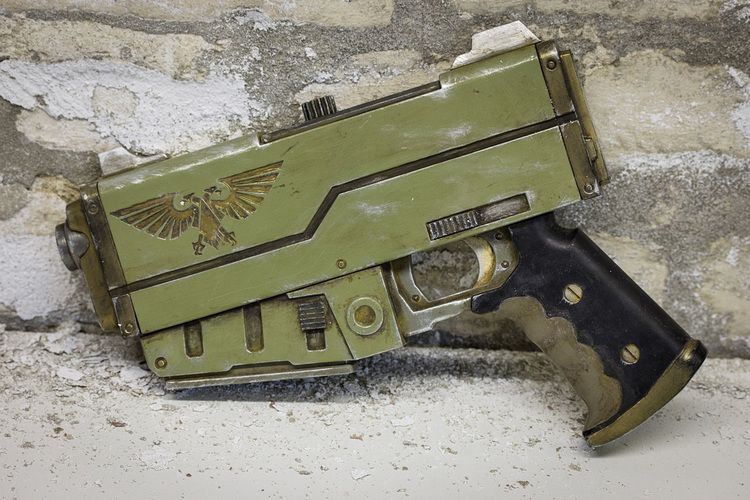 In case of damage to the barrel, Wilson has a way out: his pistol uses a removable barrel that can be changed within a few seconds.
In case of damage to the barrel, Wilson has a way out: his pistol uses a removable barrel that can be changed within a few seconds.
The author of a deadly project doesn't care too much about the discussions around his invention. Last year's Massachusetts Sandy Hook massacre, when 20-year-old Adam Lanza single-handedly shot 12 children and 6 adults, only hastened Wilson's initiatives to circumvent federal gun bans. While Congress vetoed magazines with a capacity of more than 10 rounds, Defense Distributed introduced a 3D-printed 30-round magazine for AR-15 and Kalashnikov semi-automatic rifles. In March, Wilson and his associates posted a video on YouTube in which they proudly showed off a printed AR-15 receiver with a potential of several hundred shots. It is the turnover of receivers that is limited by American laws. It turns out that, using the advice of Defense Distributed, any owner of a 3D printer received instructions on how to get around the bans.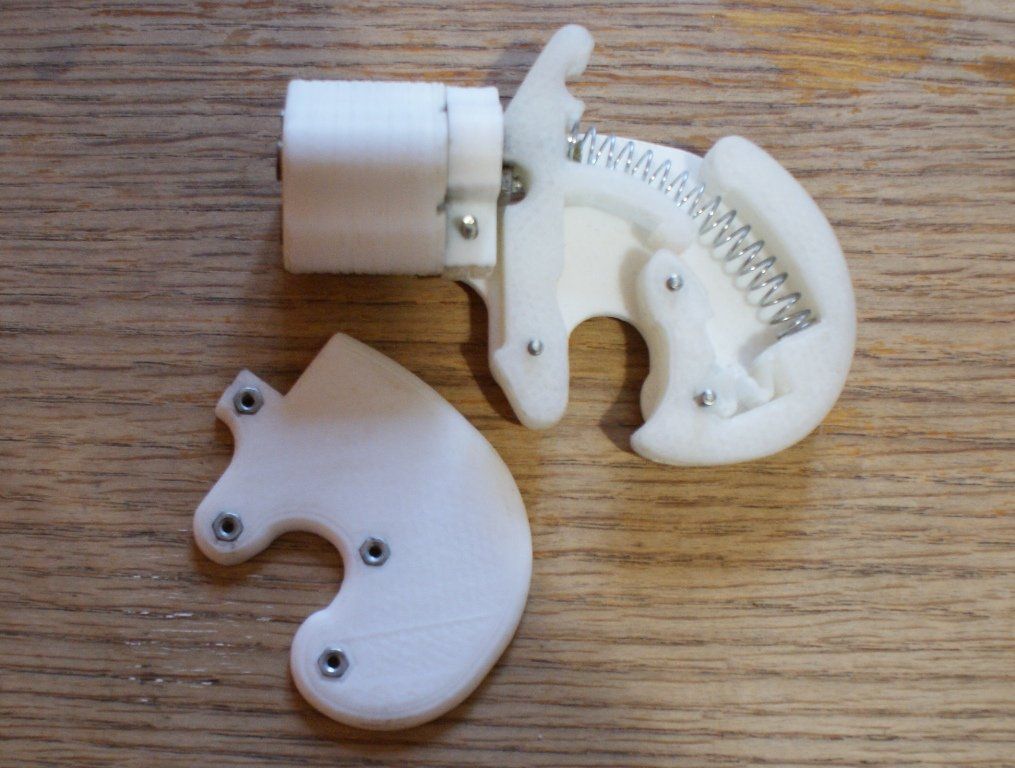 All other parts of the rifle are easy to order by mail.
All other parts of the rifle are easy to order by mail.
The figure of Wilson in connection with the growing arsenal of his inventions is increasingly criticized. Many opponents focus on the enthusiasm of the leader of the group, which today brings together about 15 volunteers - designers and engineers - around the world. The ambitious libertarian has already received a dozen death threats, and often anonymous spiteful critics promise to shoot the demiurge of a 3D weapon from his own brainchild. Wired magazine even included Wilson in the list of the 15 most dangerous people in the world. The Coalition to Stop Gun Violence labeled the inventor as an "ardent rebel" and advocate for anti-state violence. “This guy is actually sending the message ‘print your own guns and be prepared to kill civil servants,’” organization spokesman Ladd Everitt was categorical. “The fact that we still don’t talk about it in those terms even after the Boston bombing is unimaginable.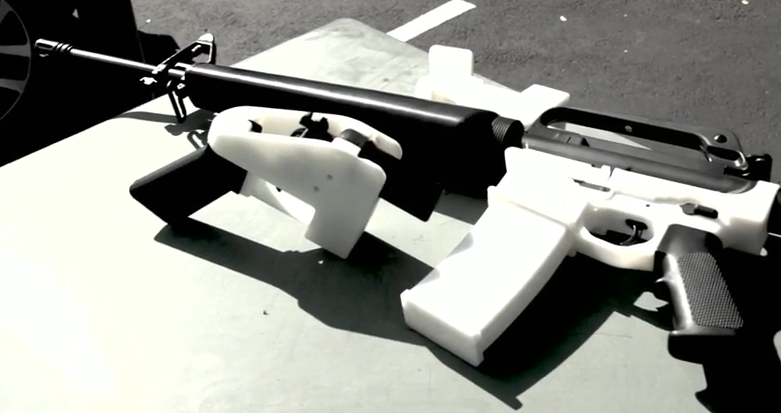 ”
”
Wilson dismisses suspicions of a desire to organize a rebellion. He sees the global goal of his activity in demonstrating the advantages of technology over the desire of the state to regulate the circulation of weapons. Ultimately, people must realize the helplessness and uselessness of the authorities in their current form. “We need to inspire the population to build their own independent space. The government will increasingly find itself overboard in private life and babble there: “Hey, wait a minute,” the inventor argues. “This is the beginning of a new order on the ruins of the old order.”
He does not deny that the 3D weapon could potentially be used for assassination or political violence: “I understand that the device can harm people. But listen, we are talking about weapons. I just don't think that's a strong enough reason to abandon our developments.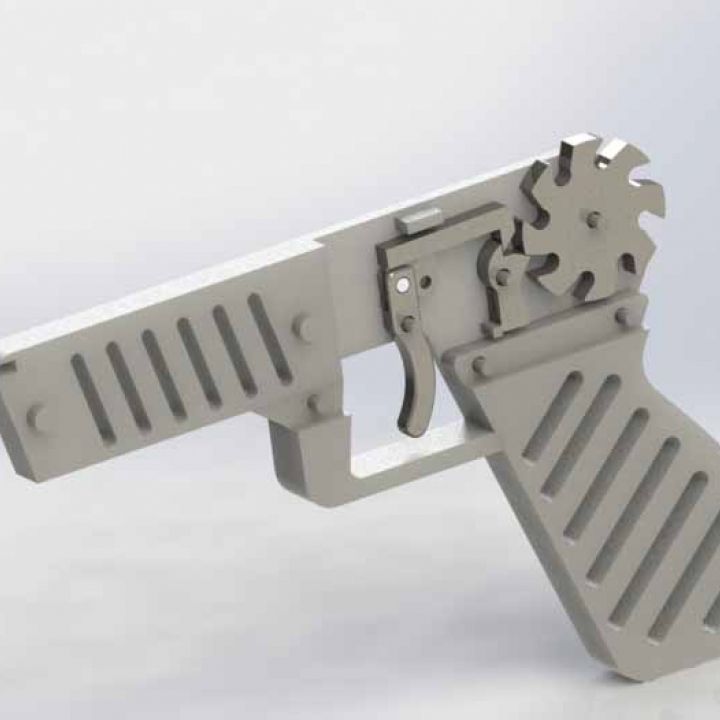 Freedom is what really matters in this case.”
Freedom is what really matters in this case.”
Wilson likes to think of his "Liberator" in the discourse of the history of the "ancestor" of the pistol. In the 1940s, American craftsmen created elementary weapons that were massively dropped from the air on the territories of the countries occupied by the Nazis. Partly in the plans of the allies at that time there was an idea not so much to arm the resistance as to demoralize the occupiers, to force them to be more careful. The ideologue of Defense Distributed hopes to do the same trick with modern state machines: “Then the enemy just watched the weapons drop from the air. Our possibilities are even wider. We have internet."
On a hot Sunday afternoon, Wilson returns to the Texas test site where he tested the Liberator prototype a couple of days ago. None of the Defense Distributed associates joined their leader this time, even engineer John left for a meeting of National Rifle Association activists in Houston at a historic moment.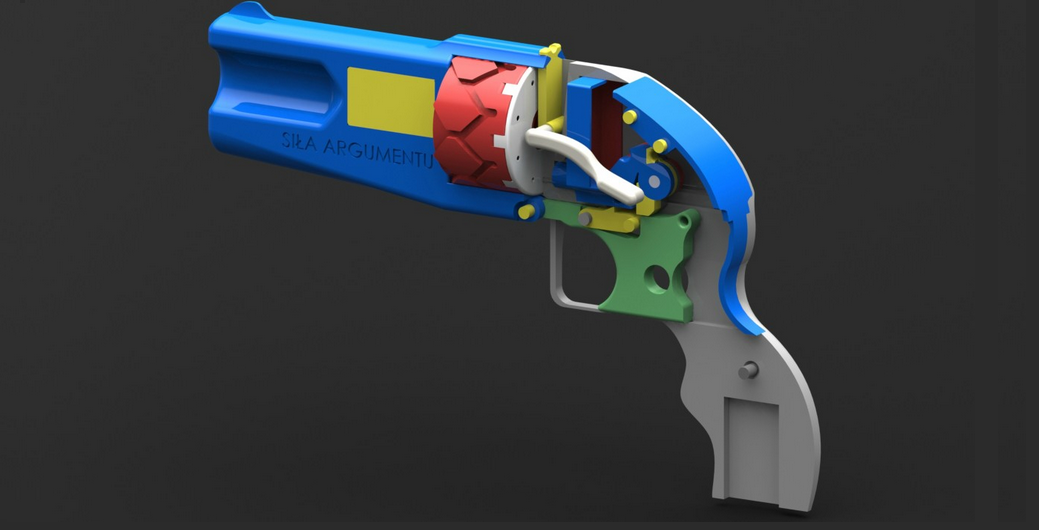 But next to the founder of the group is his father Dennis Wilson, a lawyer from Little Rock, who decided to become the only witness to the triumph of his son - the first ever shot from a 3D handgun.
But next to the founder of the group is his father Dennis Wilson, a lawyer from Little Rock, who decided to become the only witness to the triumph of his son - the first ever shot from a 3D handgun.
The last couple of days, the inventor spent on finalizing the Liberator's systems and printing out a new barrel and body to adjust the striker and minimize the threat of a second explosion. At the most crucial moment, Wilson becomes as focused as possible. His father asks how far it is from here to the nearest hospital: it turns out 45 minutes by car. We're learning how to apply a tourniquet in case things go wrong. “You guys want me to completely lose my nerves,” the protagonist of the day jokes in response.
Gradually conversations recede into the background. Wilson opens the case with the printed parts and collects them, then loads the gun and puts earplugs in his ears.






